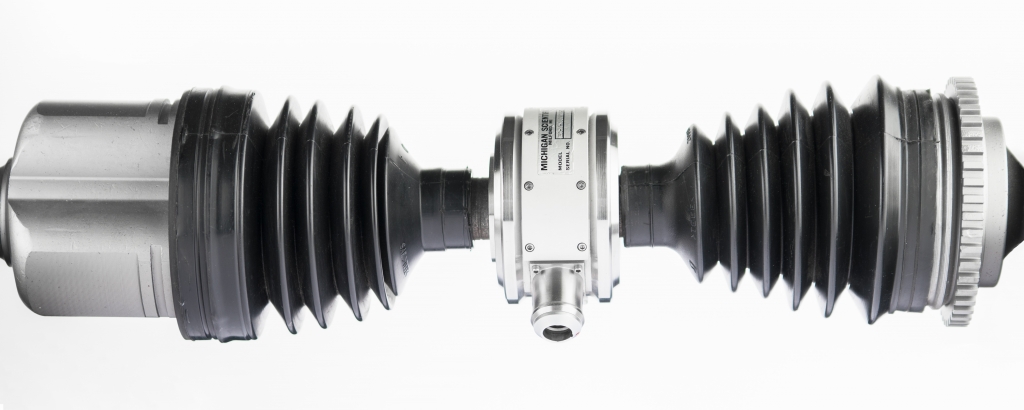Many common applications require a standard, end of shaft slip ring assembly to make rotating electrical connections for sensor measurements. However, there are applications that are more complex and require a different test set-up. These situations may have limited, or hard to reach spaces where the measurements are needed, such as getting measurements from an operating drive shaft (prop shaft) during vehicle testing. The drive shaft may not have an end available for mounting an end of shaft slip ring. In this case, Michigan Scientific’s tubular slip ring assemblies are the perfect tool for these measurements, with their through bore slip ring design.
Tubular Design
The tubular slip ring assemblies operate using the same principles as the end of shaft assemblies. The rotating electrical connections are transmitted through a ring and brush interface. Tubular models have the ability to mount directly on to the shaft with a through bore. As the shaft rotates, the rotor spins with the shaft while the ring and brush interface transmit the signals from the rotating shaft to the stationary brush. These signals could be from strain gauges, thermocouples, accelerometers, or other sensors, and are passed to data acquisition.
Use in Drive Shaft Testing
End of shaft slip ring assemblies require an open end on a shaft for mounting. Some applications do not have an open end available. Thus, the available space on the middle of shaft can be used by mounting a tubular slip ring assembly. Drive shaft testing is one of the most common applications for these slip rings. The slip ring can make electrical connections to sensors on the shaft for temperature monitoring, torque, or strain measurements. They are designed to fit on shafts ranging from 1.2 inches to 3.2 inches in diameter and are available in 4 to 8 slip ring connections. The slip rings are also available with an optional encoder package on all models, to monitor the drive shaft rotation.
Rugged Construction for Quality Signals
Since these assemblies are commonly used in drive shaft automotive applications, they are available as a weatherproof model. The slip ring is sealed against water spray, grit, dust, mud, slush, and snow to protect the internal electronics from damage and corrosion. This is ideal for field testing, where accurate simulation of driving conditions is important. While the slip ring is exposed to the elements on the drive shaft, it is important to take into account how temperature gradients across the slip ring contacts can negatively affect the signal and cause errors in data. To remedy this, these assemblies are also available with built-in amplifiers on the rotating side of the slip ring. This greatly improves the signal quality because the integrated amplifier is closer to the sensor. The amplifiers reduce data errors due to long lead wires, connector resistance variations, electro-magnetic interference, and the temperature gradients.
Michigan Scientific’s tubular slip ring assemblies are an ideal way to make rotating electrical connections to sensors during drive shaft testing because they mount directly onto the rotating shaft. To find out which tubular slip ring is best for your application, contact a Michigan Scientific representative.
